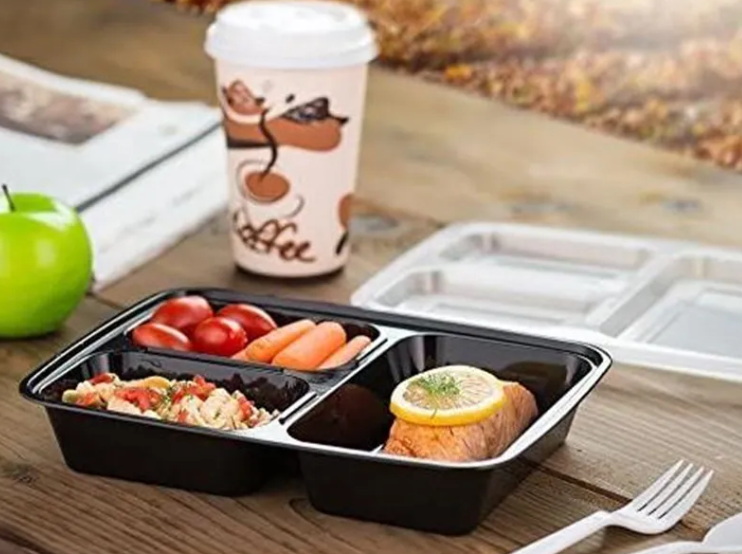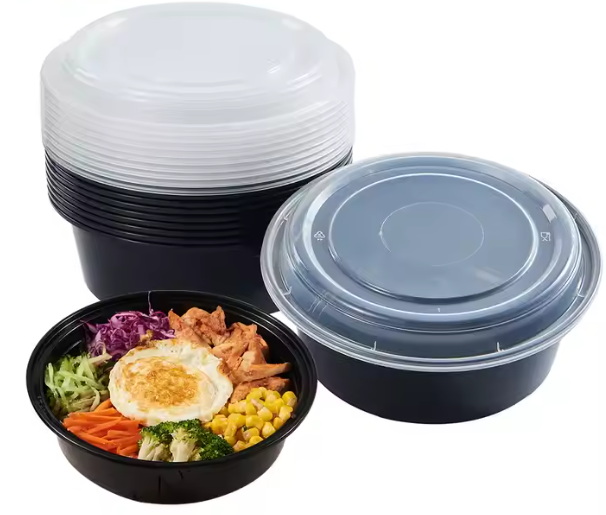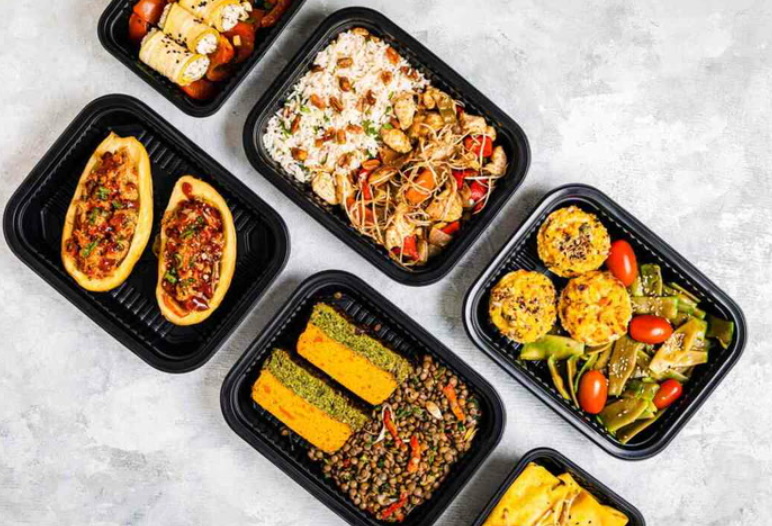
Content Menu
● Introduction to Disposable Plastic Lunch Boxes
>> Types of Disposable Plastic Lunch Boxes
● Features of Durable Disposable Plastic Lunch Boxes
● Durability Factors
● Eco-Friendly Alternatives
● Market Trends and Future Outlook
>> Impact of Sustainability on Consumer Choices
>> Role of Technology in Enhancing Durability
>> Global Market Analysis
>> Regional Preferences and Regulations
● Challenges and Opportunities
>> Environmental Impact
>> Innovation in Sustainable Materials
>> Economic Considerations
● Consumer Education and Awareness
>> Role of Social Media
>> Influence of Celebrity Endorsements
● Conclusion
● FAQ
>> 1. What are the most common materials used for disposable plastic lunch boxes?
>> 2. Can disposable plastic lunch boxes be recycled?
>> 3. Are all disposable plastic lunch boxes microwave-safe?
>> 4. What makes a disposable plastic lunch box durable?
>> 5. Are there eco-friendly alternatives to disposable plastic lunch boxes?
In recent years, the demand for disposable plastic lunch boxes has increased significantly due to their convenience and affordability. However, with growing concerns about environmental sustainability and product durability, consumers are now seeking options that are not only durable but also eco-friendly. This article will delve into the world of disposable plastic lunch boxes, exploring their types, features, and what makes them durable.

Introduction to Disposable Plastic Lunch Boxes
Disposable plastic lunch boxes are widely used for storing and transporting food due to their lightweight, water-resistant, and cost-effective nature. They are made from various types of plastic materials, each offering unique properties that cater to different needs. The versatility of these boxes has made them a staple in both personal and commercial settings.
Types of Disposable Plastic Lunch Boxes
1. PP Plastic Lunch Boxes: Made from polypropylene, these boxes are known for their toughness and resilience. They are microwave-safe, water-resistant, and ideal for both hot and cold meals. PP boxes are often used in food service industries due to their durability and ease of cleaning.
2. PS Plastic Lunch Boxes: Manufactured from polystyrene, these boxes are lightweight and shatterproof. However, they are not suitable for microwave reheating and are best used for cold foods like salads or sandwiches. PS boxes are commonly used in fast-food chains for packaging cold items.
3. PET Plastic Lunch Boxes: Produced from polyethylene terephthalate, these boxes are strong and recyclable. They are commonly used for salads and cold items. PET boxes are also used in the packaging of beverages due to their strength and clarity.
4. PLA Plastic Lunch Boxes: Made from polylactic acid, these biodegradable boxes are eco-friendly but have lower heat resistance compared to traditional plastics. PLA boxes are gaining popularity as a sustainable alternative for cold food packaging.
Features of Durable Disposable Plastic Lunch Boxes
Durable disposable plastic lunch boxes typically possess certain features that enhance their usability and longevity:
- Leak-Proof Design: Ensures that food remains fresh and secure during transport. This feature is crucial for preventing spills and maintaining hygiene.
- Modular Design: Allows for easy customization and stacking, making them versatile for different food types. Modular designs also facilitate efficient storage and transportation.
- Branding and Marketing: Often include printed logos or labels for brand recognition. This feature is particularly important for businesses looking to enhance their brand visibility through packaging.

Durability Factors
The durability of disposable plastic lunch boxes depends on several factors:
- Material Quality: High-quality materials like polypropylene offer better durability compared to lighter materials like polystyrene. The choice of material significantly impacts the box's ability to withstand physical stress and environmental conditions.
- Manufacturing Process: Boxes made with precise molding techniques tend to be more durable. Advanced manufacturing processes ensure that the boxes are less prone to cracks and breaks.
- Usage Conditions: Avoid exposing boxes to extreme temperatures or physical stress to prolong their lifespan. Proper handling and storage are essential for maintaining the integrity of the boxes.
Eco-Friendly Alternatives
While disposable plastic lunch boxes are convenient, there is a growing interest in eco-friendly alternatives:
- Compostable Containers: Made from materials like sugarcane or bamboo, these containers are biodegradable and compostable. They offer a sustainable solution for reducing plastic waste and are increasingly used in environmentally conscious businesses.
- Reusable Lunch Boxes: Options like stainless steel or silicone are durable and can be used multiple times. Reusable boxes not only reduce waste but also provide a cost-effective solution in the long run.
Market Trends and Future Outlook
The market for disposable plastic lunch boxes is evolving rapidly. With increasing awareness about environmental issues, companies are shifting towards sustainable packaging solutions. This trend is expected to continue, with a focus on developing more eco-friendly materials and designs.
Impact of Sustainability on Consumer Choices
Consumers are becoming more environmentally conscious, influencing their purchasing decisions. The demand for sustainable products, including lunch boxes, is on the rise. This shift in consumer behavior is driving innovation in the packaging industry, with companies investing in research and development of eco-friendly materials.
Role of Technology in Enhancing Durability
Advancements in technology are playing a crucial role in enhancing the durability of disposable plastic lunch boxes. New manufacturing techniques and materials are being developed to improve the strength and resilience of these boxes. Additionally, technologies like bioplastics are emerging as viable alternatives to traditional plastics.
Global Market Analysis
The global market for disposable plastic lunch boxes is diverse, with different regions preferring different types of materials based on local regulations and consumer preferences. In regions with strict environmental regulations, there is a higher demand for biodegradable or recyclable options. Conversely, in areas where cost is a significant factor, traditional plastics remain popular.
Regional Preferences and Regulations
- Europe: Known for stringent environmental regulations, Europe has seen a significant shift towards biodegradable and recyclable packaging. Companies in this region are investing heavily in sustainable materials.
- Asia: With a large and diverse market, Asia presents a mix of traditional and sustainable packaging solutions. Countries like Japan and South Korea are leading in the adoption of eco-friendly packaging, while others continue to use conventional plastics due to cost considerations.
- North America: In the U.S. and Canada, there is a growing demand for sustainable packaging, driven by consumer awareness and government initiatives. Reusable lunch boxes are gaining popularity among environmentally conscious consumers.
Challenges and Opportunities
Despite the advantages of disposable plastic lunch boxes, there are challenges associated with their use, particularly concerning environmental impact. However, these challenges also present opportunities for innovation and growth in sustainable packaging solutions.
Environmental Impact
The environmental impact of disposable plastic lunch boxes is a significant concern. Plastic waste contributes to pollution, affecting marine life and ecosystems. Addressing this issue requires a shift towards more sustainable materials and practices.
Innovation in Sustainable Materials
The development of sustainable materials is a key area of innovation. Bioplastics, for instance, offer a promising alternative to traditional plastics. These materials are made from renewable resources and can reduce carbon emissions during production.
Economic Considerations
While sustainable options may be more expensive initially, they can offer long-term cost savings. Reusable lunch boxes, for example, can be used multiple times, reducing the need for frequent purchases of disposable boxes.
Consumer Education and Awareness
Consumer education plays a crucial role in promoting sustainable practices. By understanding the benefits of eco-friendly packaging, consumers can make informed choices that support environmentally responsible businesses.
Role of Social Media
Social media platforms have become powerful tools for raising awareness about environmental issues. Campaigns and initiatives promoting sustainable living often go viral, influencing consumer behavior and driving demand for eco-friendly products.
Influence of Celebrity Endorsements
Celebrity endorsements can significantly impact consumer preferences. When influential figures advocate for sustainable practices, it can lead to increased adoption of eco-friendly products, including lunch boxes.
Conclusion
Disposable plastic lunch boxes offer a convenient solution for food storage and transport, but their durability varies based on material and design. For those seeking more sustainable options, compostable or reusable lunch boxes are viable alternatives. As consumers become more environmentally conscious, the demand for eco-friendly products is expected to rise.

FAQ
1. What are the most common materials used for disposable plastic lunch boxes?
- Disposable plastic lunch boxes are commonly made from polypropylene (PP), polystyrene (PS), polyethylene terephthalate (PET), and polylactic acid (PLA).
2. Can disposable plastic lunch boxes be recycled?
- The recyclability of disposable plastic lunch boxes depends on the type of plastic used and local recycling programs. It is advisable to check with local recycling centers for specific guidelines.
3. Are all disposable plastic lunch boxes microwave-safe?
- Not all disposable plastic lunch boxes are microwave-safe. PP plastic lunch boxes are generally safe for microwave use, while PS and PET boxes are not recommended for reheating.
4. What makes a disposable plastic lunch box durable?
- Durability in disposable plastic lunch boxes is enhanced by using high-quality materials like polypropylene, leak-proof designs, and robust manufacturing processes.
5. Are there eco-friendly alternatives to disposable plastic lunch boxes?
- Yes, alternatives include compostable containers made from materials like sugarcane or bamboo, and reusable lunch boxes made from stainless steel or silicone.

















